The Graduate Program in Environmental Engineering (PPEAMB) has an administrative area of approximately 210 m2, fully air-conditioned and furnished, divided into: two classrooms (room 1 - 60m2, room 2 - 30m2), two study rooms, both 30m2 and with internet access, and a coordination office (30m2). The entire space is connected to a fiber optic and wireless network, linked to the global computer network through the UFRPE's Information Technology Center (NTI). Students and faculty have remote access to the Capes Journals Portal, allowing them to access scientific articles, theses, books, patents, and other documents from various fields of knowledge.
PPEAMB also has a broad support structure that facilitates the development of dissertation projects without major difficulties. Most of these are institutional multi-user laboratories dedicated to research and graduate studies. Below are the laboratories available and most frequently used by students and faculty:
Bioremediation Laboratory. approximately 100 m², the laboratory conducts research on the use of microalgae for wastewater treatment, evaluating their ability to remove nutrients, organic matter, and other contaminants. The experiments include cultivation in different proportions with real wastewater, monitoring of algal growth, and chemical analyses such as nitrogen, phosphorus, and COD. Additionally, the laboratory is equipped for biomass characterization, determination of protein and lipid content. The results contribute to the development of sustainable technologies for wastewater treatment and the utilization of the generated biomass.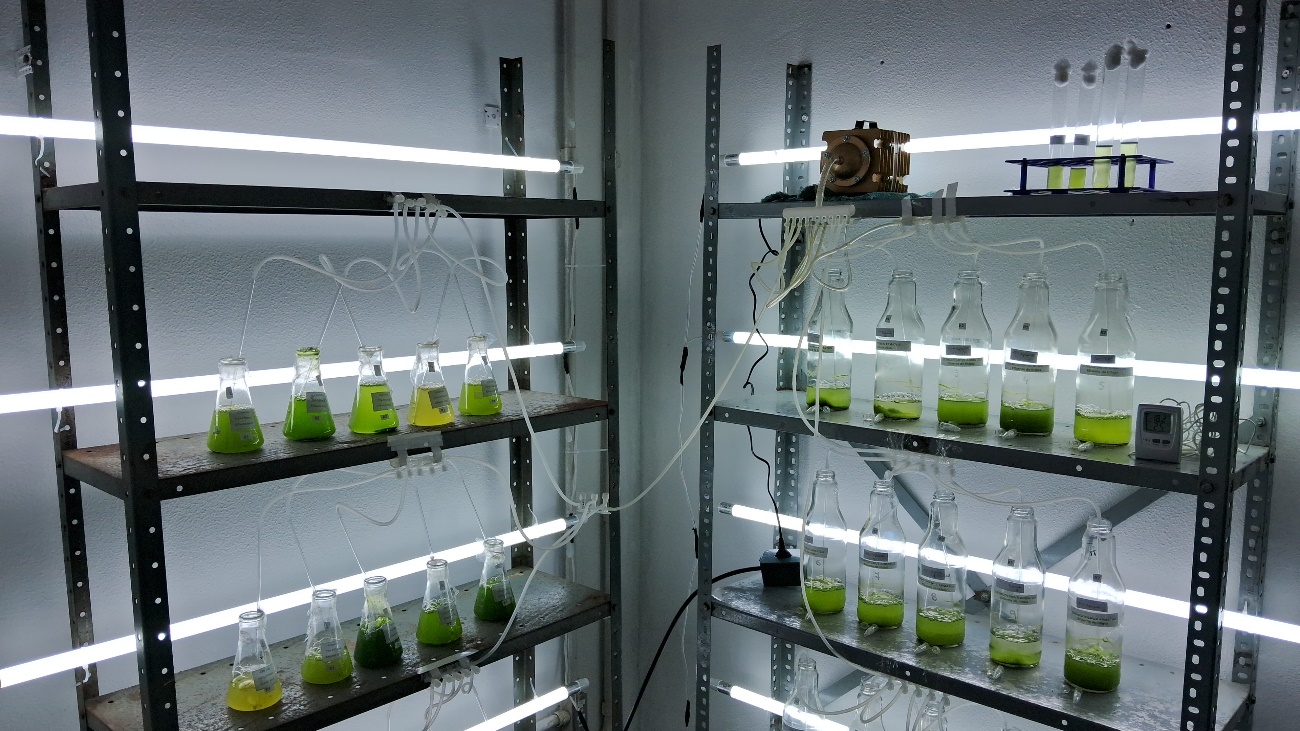
Water and Pollutant Dynamics in Soil Laboratory. It is equipped with instruments that allow for various tests, such as granulometry, retention curves in funnels and pressure plates, saturated hydraulic conductivity, displacement of miscible liquids in soil columns. It has an available area of 150m2. The main equipment includes: TDR; disk permeameters; peristaltic pumps; data acquisition centers; Richards chambers; sensors for measuring soil temperature, moisture, and matric potential; and a device for determining energy balance. It also has rooms for faculty and students with networked computers and internet access.
Soil Conservation Engineering Laboratory. Located in an area of approximately 50m2, it contains a faculty office, a student room, and workbenches for sample analysis and treatment. The laboratory includes equipment for experimentation and analysis, such as a portable rainfall simulator for studying water erosion, a forced-air circulation oven, a precision balance, a hydraulic press for soil stress studies, a direct shear apparatus, an electric generator, planimeters and curvimeters, precision and rustic levelers, current meters and microcurrent meters, an electromagnetic shaker for granulometric characterization studies, and automated stations for hydrological and fluviometric data collection.
Soil Physics Laboratory. With approximately 100m2, the area is divided into faculty rooms, student rooms, and laboratories. It includes a specific room for balances and another for analyses, containing workbenches for instrument support, experimental setups, and sample pre-treatments. The laboratory is equipped with a bench soil sampler for inserting volumetric rings into soil blocks, ovens with and without forced-air circulation, precision balances, a wet sieving table with agitation (Yooder type) for three complete sieve sets (2.0 mm; 1.0 mm; 0.50 mm; 0.25 mm, and 0.106 mm), a bench dynamometer (penetrometer), equipment sets for determining saturated hydraulic conductivity (constant head and falling head methods), a Guelph permeameter for saturated hydraulic conductivity, a tension table with a capacity for 40 volumetric rings (5 x 5 cm), tensiometers (30 cm height, total of 30 units), a digital tensiometer, Haines funnels (= 9 cm) with a maximum tension capacity of up to 15 kPa, Richards chambers (two low-pressure and two high-pressure), ceramic plates (five units per pressure: 1 bar, 3 bar, 5 bar, and 15 bar), and a vapor pressure osmometer. The laboratory also has a room dedicated to practical classes involving soil physics tests.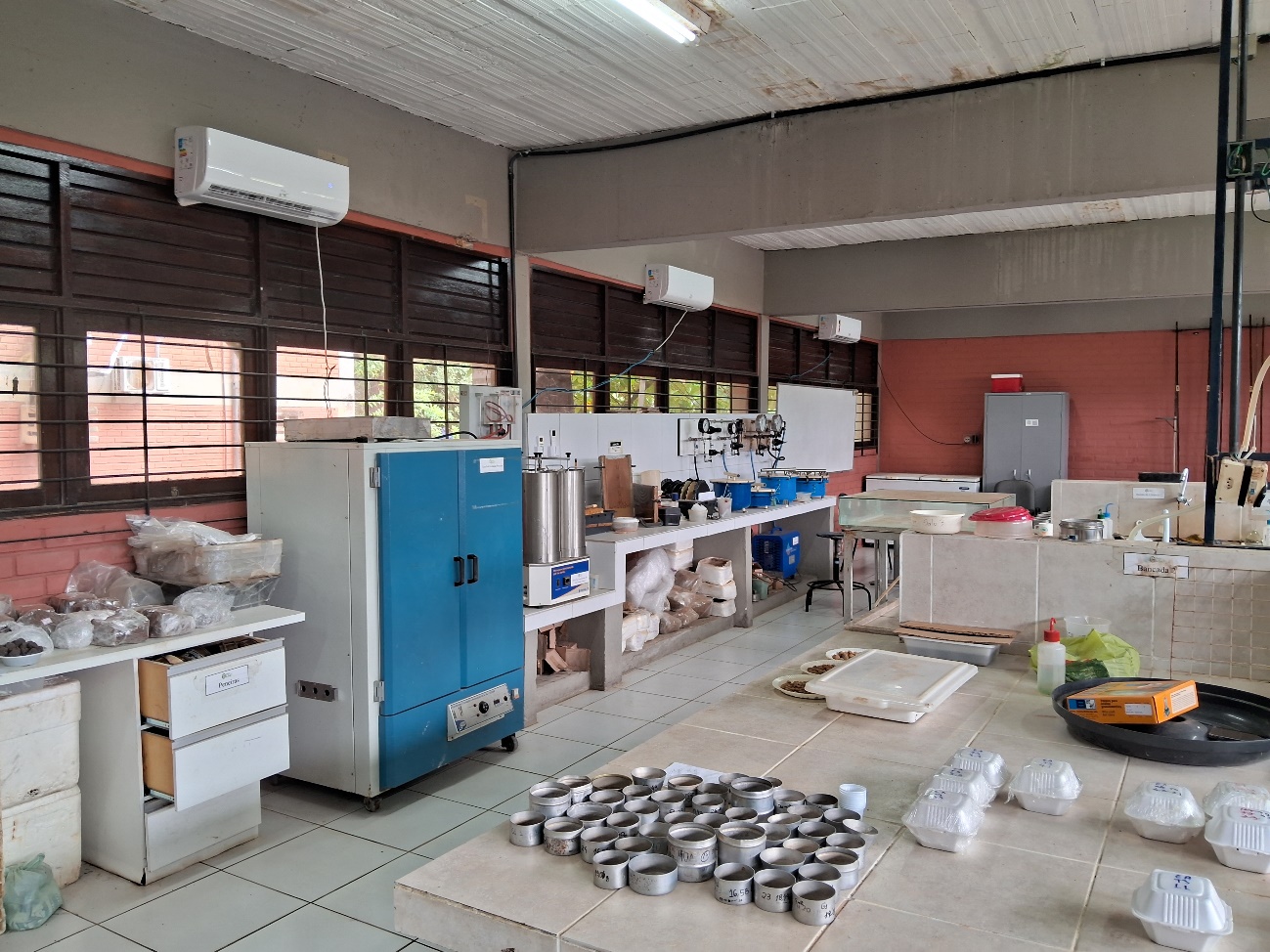
Geoprocessing Laboratory. It supports and facilitates activities related to the graphical representation of geographic phenomena and the visual and automatic interpretation of remote sensing images. It covers an area of 105m2, housing 30 state-of-the-art PCs with licensed AutoCad and ArcGis software, as well as open-source software such as Qgis. It also includes equipment for field data collection, such as a total station, geodetic GPS (L1 and L2), theodolites, leveling instruments, and navigation GPS devices.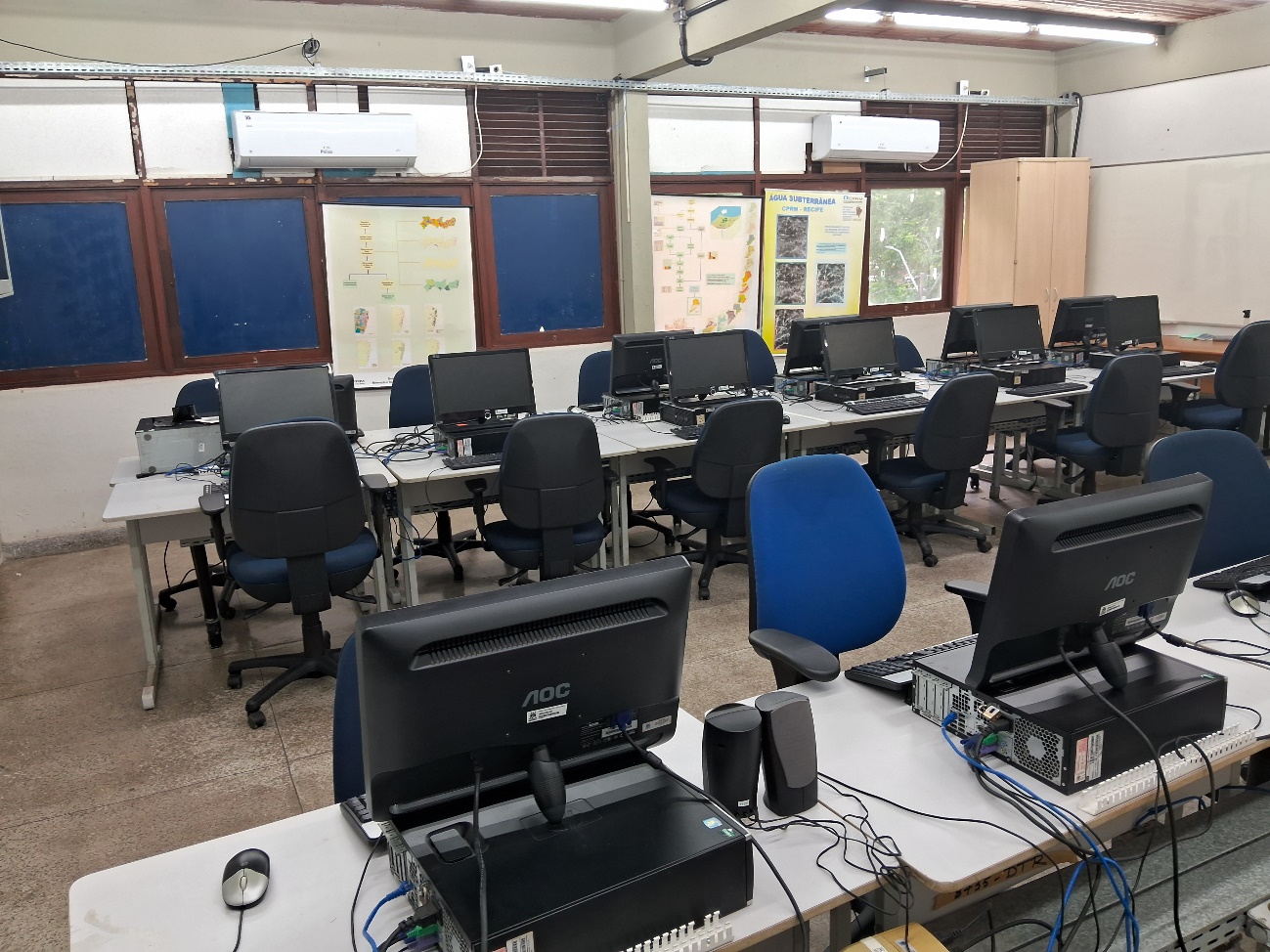
Construction Materials and Environmental Technologies Laboratory. Covering approximately 70m², it is divided into clean, dirty, and hot areas for sample preparation, soil and waste storage, and testing with ovens, muffle furnaces, sieve agitators, a hydraulic press, balances, sedimentation tanks, a concrete mixer, a mortar mixer, test specimens, and a complete set of glassware and accessories for inertization and characterization of industrial solid waste. It focuses on developing new products and materials to reduce natural resource consumption, particularly for the construction industry, red ceramic industry, and local garment industry. The laboratory also conducts research on renewable energies, industrial waste management models, and environmental certifications.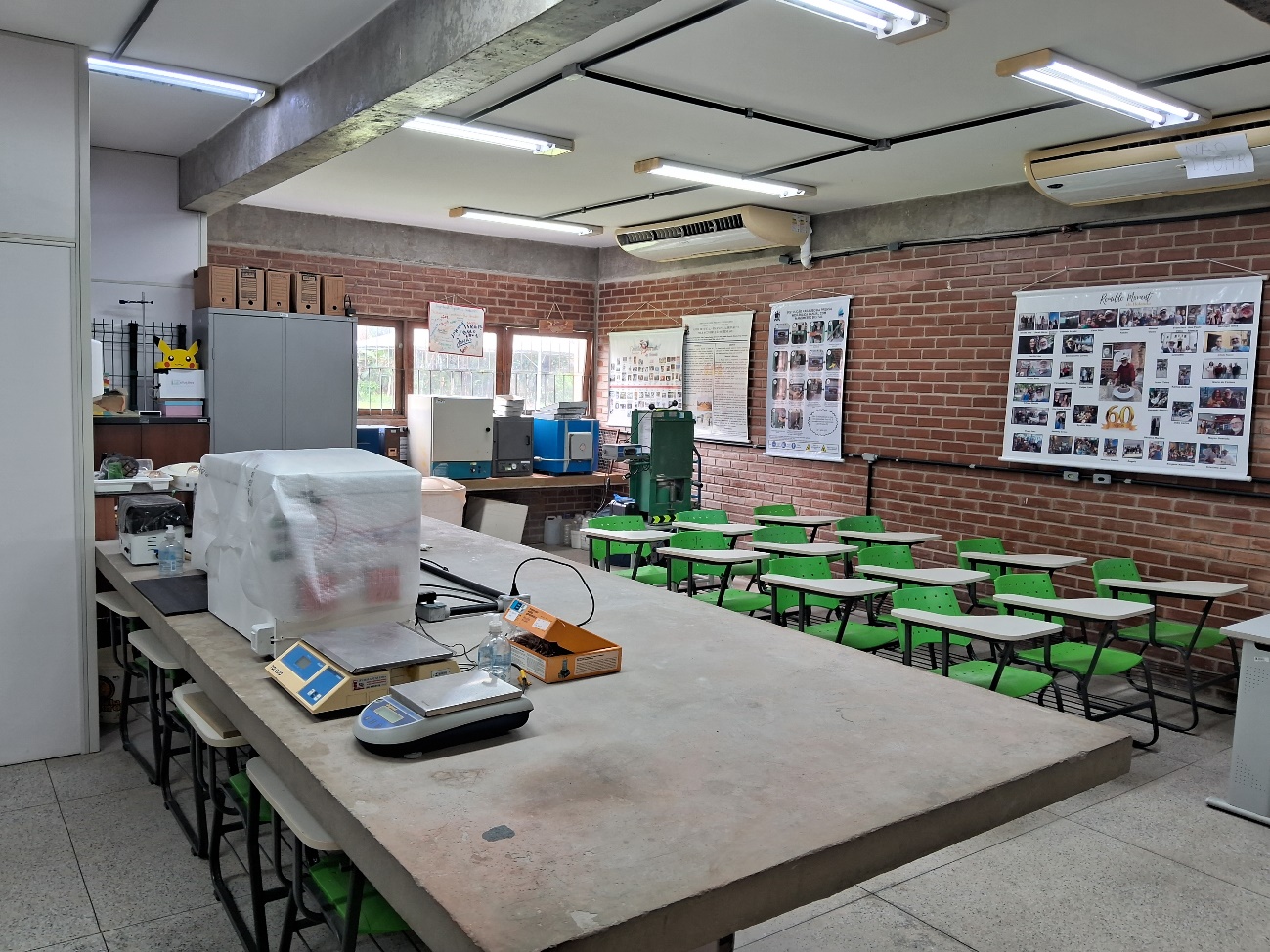
Environmental Sanitation Laboratory. With approximately 70m2, it performs water quality analysis. The main equipment includes a forced-air circulation oven, an Oxitop system for BOD analysis, a BOD incubator, a flame photometer, a UV-VIS spectrophotometer, a pH meter, a conductivity meter, a muffle furnace, a COD reactor, a turbidimeter, a sterilization oven, and a semi-analytical balance.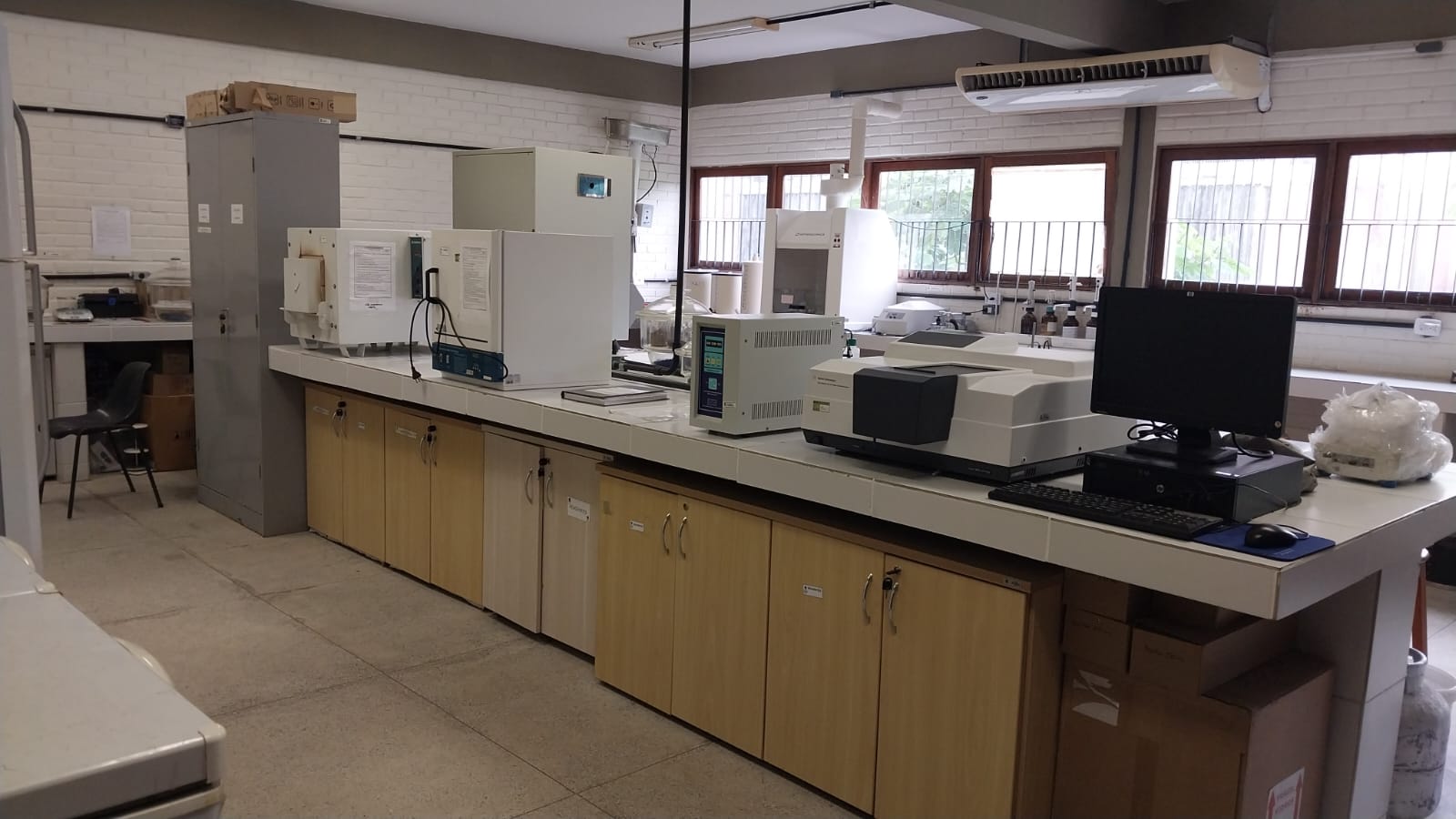
Research Support Center (CENAPESQ). This is a support unit for various university sectors, particularly for graduate programs, carrying out multiple scientific tasks as a multi-user center. Acquired equipment includes: HPLC with DIAD detector and refractive index (Shimadzu, Prominence model); Gas Chromatograph (Perkin Elmer, Clarus 500 model); Atomic Absorption Spectrophotometer (Varian, AA240FS model); UV-Vis Diode-array Spectrophotometer (HP, 8453 model); Potentiostat/Galvanostat (Eco Chemie, Microautolab Type III model) equipped with an electrode system (Metrohm, 663 VA Stand model); Gas chromatograph coupled to a mass spectrometer 431 CG coupled to a 220 MS mass spectrometer; Fourier transform infrared spectrometer (FTIR VARIAN 640) with ATR; water purification system for obtaining ultrapure water (MILIQ); UV-Vis device with temperature control system for enzymatic kinetics (CARY 50); UPLC - Ultra-Efficiency Liquid Chromatography System, among others.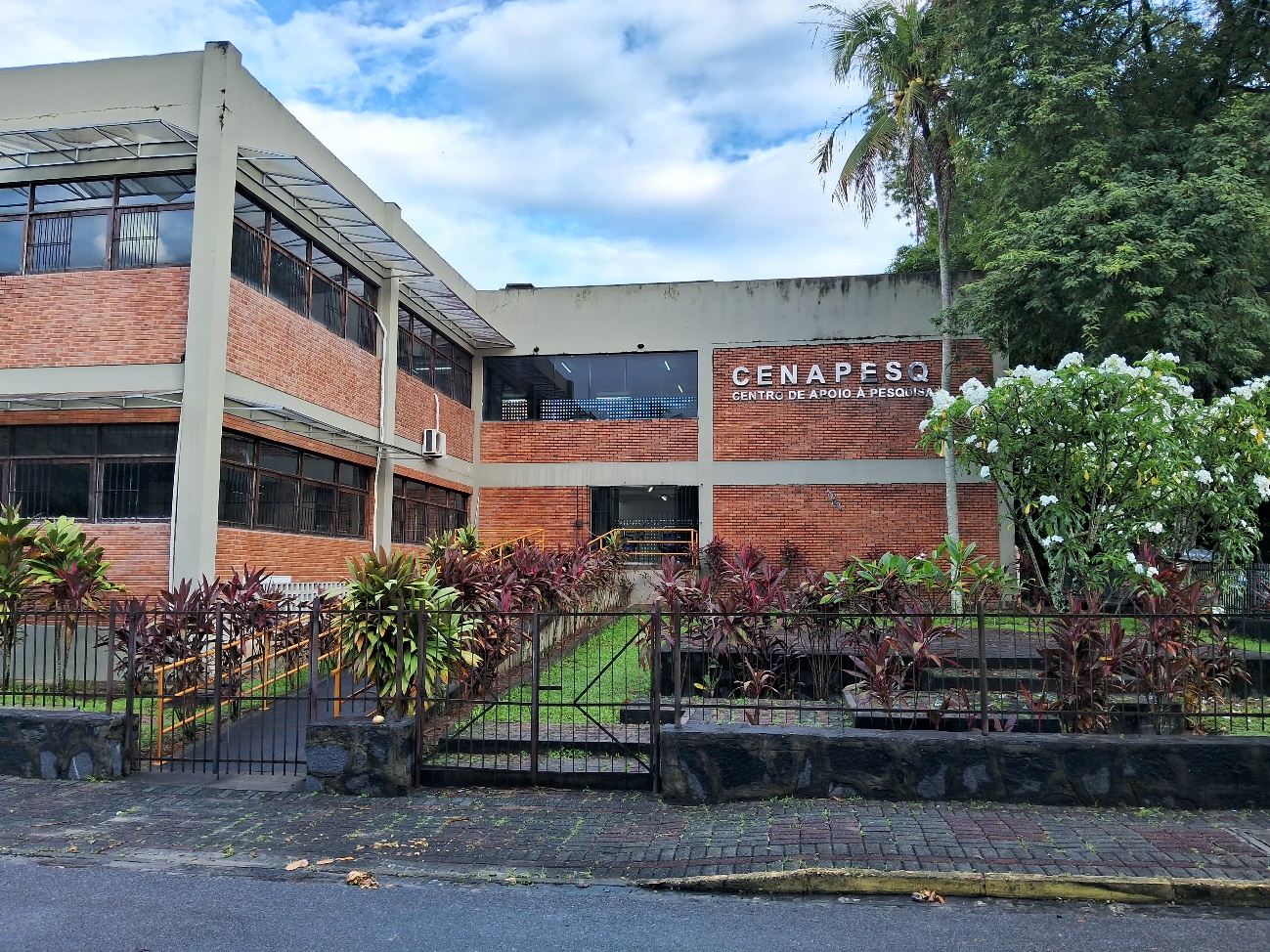
The Federal Rural University of Pernambuco also runs the Research in Motion program, which provides vehicles and fuel for faculty and student field research and manages Experimental Stations across Pernambuco: Litoral, Zona da Mata, Agreste, and Sertão. These stations expand UFRPE’s activities and support faculty research projects, as they are equipped for sample preparation and storage and provide accommodations for faculty and students. The experimental stations and the Research in Motion program constitute a vital infrastructure resource for dissertation projects at a relatively low cost.
Finally, the UFRPE Central Library occupies an area of 3,026m2, spread across three floors. It offers individual and group reading rooms. All services are computerized, including home loans, material renewal and reservations, consultation of books, monographs, dissertations, theses, newspapers, magazines, encyclopedias, atlases, and dictionaries; interlibrary loans; a video rental service and video room; restoration and binding; access to Comut, Capes Portal, and other online databases. The library is integrated into the Digital Library of Theses and Dissertations (BDTD), providing intellectual output via the Internet, where the collection is digitized and made available to users, facilitating access to scientific and technological production and improving information flow. PPEAMB students have full access to the UFRPE Central Library's collection, currently comprising approximately 230,000 volumes, which can be consulted via the Pergamum Online Catalog. Materials are organized into collections and cataloged based on the Dewey Decimal Classification (DDC).
Since 2020, the academic community has had access to the Minha Biblioteca e-book platform, which includes over 11,000 titles from major academic publishers across all fields of knowledge. The platform provides unlimited access to all catalogs and offers features such as online reading on computers or mobile devices, printing, and accessibility tools. Students enrolled in PLE (Undergraduate, Graduate, Technical, and Distance Learning) are pre-registered and can access the platform’s virtual environment.
Programa de Pós-Graduação em

